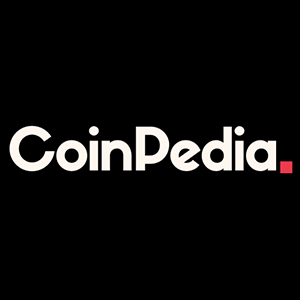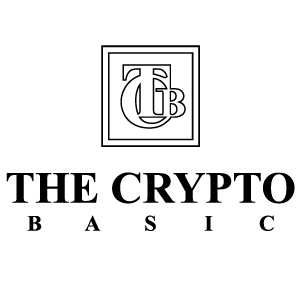Bitcoin Revisited: Yes, Still Buying Hand Over Fist
Summary Bitcoin's bull cycle is driven by factors beyond the ETFs, including the Halving event, macroeconomic conditions, and the emergence of meta protocols and layer 2 solutions. The Halving event, which reduces the supply of Bitcoin, historically leads to price surges before and after the event. Meta protocols and layer 2 solutions on Bitcoin expand its utility and attract more users, potentially driving broader adoption and increasing its value. This crypto bull cycle could be very much Bitcoin dominant. And the ETFs will only help catalyze inflows. I cover some price targets and an actionable trading plan, as well as risks to the thesis. Bitcoin (BTC-USD) stands at the forefront of a potentially transformative crypto bull cycle. You’ve probably heard many discussions about the spot ETFs, so I won’t belabor that point here. The truth is that to many observers of the space, the ETFs were one of the more boring things going on in Bitcoin over the last few months. This article delves into the other key catalysts poised to drive Bitcoin's ascendancy through 2025. Given the recent rally, many might wonder whether now might be too late to get in. My previous article about Bitcoin was back when BTC was still below $30,000. In it, I detailed Why I'm Buying 14-Year-Old Tulips With Both Hands . I remain incredibly bullish on Bitcoin's long term (10+ year) prospects and its prospects over the next 18-24 months. I am still buying these tulips (which just turned 15 years old several weeks ago) with both hands. And indeed I am buying nothing else except these very special tulips. Halving in April with a Strong Macro Backdrop I find it obligatory to mention the Halving because this is historically the driver of crypto bull and bear cycles. The Halving is a known, preprogrammed event where the issuance of new BTC will be cut in half every 4 years. This has an effect of decreasing the supply of BTC being sold, which increases the price. Historically, the BTC price has surged both into and after the Halving. The Halving has been like this midpoint in a bull market, and the gains after the Halving tend to be larger than the gains before the Halving. Rainbow Chart (blockchaincenter.net) 2024 is especially interesting because it lines up with a year when the US must issue a lot of debt to cover the debts that are maturing this year. This will push up the price of hard assets, like BTC. In fact, most risk assets have been having a good year, most likely in anticipation of rate cuts and monetary inflation. BTC can be thought of as a proxy for global fiat currency liquidity. Here is the chart of the BTC price next to the global M2. The two time series move pretty closely together. BTC and Global M2 (look into bitcoin) When combined with the Halving, the macro setup appears almost perfect for this BTC bull run to continue. Now, while the supply and demand argument for the Halving is sound, I don’t think one should rely on this forever. Bitcoin bulls frequently talk as if BTC’s circulating supply will forever shrink because there is a segment of buyers who will never sell. This is not wrong, but it’s clearly not a reason for the price going up forever. Short-term traders will get in and out and this will drive price action in the short term. In the short term, sentiment will dominate everything. But the Halving, I believe for now, still represents a compelling force that is overwhelmingly positive for sentiment across the board. Thus, I view this as still the strongest catalyst for this current 4-year cycle. Meta Protocols on Bitcoin Historically perceived as a digital gold, Bitcoin's utility is undergoing a minor paradigm shift with the advent of meta protocols such as Ordinals, BRC20 tokens , and Runes . These represent a new era of tradable assets on the Bitcoin blockchain, extending its utility beyond a store of value to encompass fungible and non-fungible tokens (NFTs). This expansion into the realm of tokens could catalyze a broader adoption and utility of Bitcoin, mainly repositioning it in the eyes of crypto enthusiasts who view Bitcoin mostly as the original blockchain where nothing really happens (read: there isn’t much potential for rampant and highly leveraged speculation). The cool thing, and what adds to their appeal, is that these tokens are native to Bitcoin. In fact, the tokens are simply information written somewhere within Bitcoin transactions. The information adheres to some standardized community-formed rules which describe the tokens. Anyone adhering to the rules will acknowledge these tokens, but most Bitcoin users will probably not. The tokens’ rules are not enforced at the protocol level of Bitcoin: they are only enforced by those who are playing by the agreed-upon rules. This is really what makes these “meta” protocols. They are there as a function of social consensus, but not really enforceable using the logic of Bitcoin. To be clear, most of these tokens that are being minted on Bitcoin have little or no value. They have, however, tremendous speculative potential which is a proven force of allowing the base layer’s native token (in this case BTC) to grow in price. Non-Bitcoin crypto is almost entirely speculation. The bull markets are when speculation is most rampant. The creation of these tokens over Bitcoin’s base layer is a huge opportunity, and we are already seeing projects around trading and minting these tokens. This will be a positive force for Bitcoin, which should increase the price of BTC. We see the same overall thing with other smart contract blockchains: more activity on those base layers tend to increase the value of the native token. More activity over Bitcoin should increase the value of BTC. Another less appreciated avenue that this will help Bitcoin’s security fundamentals. Most informed people understand that Bitcoin’s security comes from the enormous hashrate that is securing the network. Hashrate comes from miners who operate based on economic incentives. As these meta protocols create more demand for the Bitcoin transactions, they raise the value of transaction fees, which means more revenue for the miners. This means that miners have an incentive to expand their operations, bringing in more hashrate, and therefore security for the network. So even though the tokens might not have value beyond being speculative vehicles, they generate a positive externality which strengthens the security, and therefore utility, of Bitcoin. A more secure Bitcoin justifies a higher price for BTC, because the primary innovation of Bitcoin is that it is a secure and decentralized monetary network. Derivatives via DLCs Discreet Log Contracts (DLCs) are another development, laying the foundation for derivatives directly on Bitcoin's base layer. A DLC is a special kind of smart contract on Bitcoin. BTC locked in a DLC can be spent only with the help of third parties publishing information which corresponds to real-world events, such as the price of a financial asset or the result of a sports game. Combining DLCs with the Lightning Network allows the creation of derivatives which can be quickly settled and margined without having to touch the base layer too often. By enhancing the base layer's utility, DLCs attract a new wave of financial applications and users, further integrating Bitcoin into the fabric of decentralized finance. This increased utility not only underscores Bitcoin's intrinsic value but also expands its appeal to a broader range of users. While the alternative smart contract blockchains have traditionally been the grounds on which DeFi applications have been built, DLCs are starting to pull some of that action to Bitcoin. In terms of utility, it is still mostly speculation. This is, however, a bit different from the meta protocols mentioned above because the contracts are enforced using Bitcoin’s logic rather than a social agreement on top of Bitcoin. Two interesting DLC protocols are LN Markets and Atomic Finance (this Atomic Finance link also has a good more technical description of what a DLC is). The former just did an Alpha release and supports futures trading over Lightning. The latter has been live for a while now and supports a relatively passive covered calls strategy for the BTC committed to the protocol. Both have seen some interest from users, signaling that the use of DLCs could become a catalyst for more financial applications built over Bitcoin. To tie this back to the price of BTC, more utility means more value, both speculative and intrinsic. Bitcoin supporting more speculative activity at the base layer via DLCs, should help the token price of BTC the same way more speculative activity on Solana helps boost the price of SOL. A Surge in Bitcoin-Centric Crypto Projects and Layer 2 Solutions The burgeoning interest in developing projects and Layer 2 solutions on the Bitcoin network is indicative of its growing appeal as a platform for innovation. In contrast to previous cycles dominated by standalone chains or Ethereum's Layer 2 solutions, Bitcoin is now emerging as a central figure in blockchain innovation. Of all the publicized L2 projects, I think Botanix and Citrea are the most interesting. Botanix is a proof-of-stake sidechain which can be built right now over Bitcoin. It uses a decentralized network of multi-signature wallets to secure a 2-way-peg between Bitcoin and the Botanix blockchain. Botanix’s proof-of-stake is extremely creative too, as it uses BTC as the staking asset. Validators, called Orchestrators, are responsible for securing the locked up BTC and maintaining the peg-in and peg-out process between Bitcoin and Botanix, as well as creating blocks and making state changes. I think this is a pretty cool project because it turns BTC into a yield bearing asset, where the yield is paid in BTC and comes from the gas fees generated by the Botanix blockchain. Botanix is an EVM-equivalent layer, which means projects built on Ethereum can literally be copy-pasted and deployed on Botanix. Botanix can very well be a layer where Bitcoin native DeFi and Web3 occurs, and its success will directly increase the value of BTC through pure economics. This is because if the Botanix blockchain generates a lot of gas fees from on-chain activity, then BTC holders have an incentive to stake their BTC on Botanix to earn yield from these gas fees. This will definitely add to the (growing) demand for BTC, which obviously increases the price. I am less excited about Citrea because I think there is still a long way to go before it is ready. But the value proposition is extremely interesting. To understand, we must go back to the release of the BitVM paper in late 2023, when it was discovered that Bitcoin is actually Turing complete under some very specific and constrained conditions. Without getting into the weeds, BitVM (among many other things) enables the creation of trust-minimized bridges between Bitcoin and other blockchains. The Turing completeness ensures that BitVM can be used to compute anything directly over Bitcoin, though it requires many, many rounds of on-chain transactions to do a whole computation. Citrea’s prime innovation is that it will be a ZK-rollup built over Bitcoin, where ZK proofs are stored on the base layer as Inscriptions (this is what powers the meta protocols above) and then verified using BitVM. All withdrawals from and deposits into the Citrea rollup are technically secured by the logic of the base layer using data on the base layer, which is something that could not be said before. ZK rollups were known to be impossible on Bitcoin. Technically, a fully trustless rollup is still impossible, but Citrea’s use of BitVM has made it as trust-minimized as one can possibly be. ZK proofs are still an area of cryptography that requires significant development, so it could be a while before something with good user experience comes to Bitcoin. These projects demonstrate that what has long been the playing ground of other blockchains is starting to come to Bitcoin, the original blockchain and the most dominant crypto asset by far. The reason I think this is very bullish is that all this increased utility will help shift some of the market cap in other crypto assets into BTC. The historical reason for the rise of Ethereum and other smart contract blockchains as that Bitcoin lacked a lot of functionality (mainly smart contracts) in the first few years of crypto. The fact that Bitcoin is starting to gain such functionality while it has maintained its crypto dominance all these years means that it is finally well placed to capture market share and mind share from a highly advantageous position. This bull cycle can very well be marked with BTC curiously outperforming the others because a lot of interest in non-Bitcoin chains will be redirected back to Bitcoin. The ETFs only serve as the icing on top because they give institutions a far easier way to benefit from this most favorable price action. Price Target: $175,000 Before 2026 My prediction for the top of this bull cycle is $175,000 per BTC. I got this number mainly from the chart below, which shows the peak-to-peak and trough-to-trough price multipliers for each 4-year cycle. Peaks and Troughs multipliers (crypto.com) For better context, the peak in the previous bull market was just under $70,000. The multipliers are diminishing from one peak to the next. This makes sense to some degree because of the law of diminishing marginal returns. As an asset gets really big, it becomes harder to apply another multiplier to its market cap. I think the multiplier for the next peak will probably be 2-3x. This puts the price target between $140,000 and $210,000. Thus, I think $175,000 is reasonable. I believe the very Bitcoin-centric crypto catalysts we are seeing will be the thing that pushes this bull market out closer to $200,000. Another way I got this number is by looking at the rainbow chart. The colored bands indicate price ranges, and BTC has traded very much within these bands in this logarithmic (read: diminishing marginal returns) trajectory. Since the first two cycles saw a breach of the red areas (top of the channel) and the third cycle saw only a breach of the orange ones below the red, I think the fourth cycle will see a breach of the bands even lower. Given the time after the Halving it takes to hit the peak, I estimate this to be in late 2025, and the price of the light-orange band indicates between $146,000 and $187,000. Price chart with projected price action (blockchaincenter.net) Ultimately, the fact that BTC is an emerging asset class which has only recently found institutional acceptance in the form of spot ETFs tells me that there is plenty of room for BTC to catch up with precious metals and other stores of value. For context, gold's market cap is over $13 trillion. Silver's market cap is about $1.3 trillion, but it has a higher annual supply inflation rate. The market cap of the S&P 500 is about $43 trillion. Some of this value is clearly parked in U.S. equities for their store of value properties, not really to earn the cash flow of the underlying equities. This is effectively a "monetary premium" because fiat money isn't a great store. The same can be said for the market cap of real estate: much of it is for earning the rental cash flow, but some of it is because real estate is a hard asset inflation hedge. Bitcoin's market cap is around $1 trillion right now. The main argument justifying a price target of $175,000 before the end of this bull cycle is that if even a tiny bit of the market caps of these other asset classes moved into Bitcoin, then reaching $175,000 would not be a stretch. BTC also adds to the convexity of this upside because its supply is completely inelastic to its price. If the price of gold shot up, more people would mine gold and this would increase the supply. If the price of stocks shot up, companies will often issue shares to capitalize on the cheaper cost of equity capital. If the price of real estate increased, it becomes profitable to do more developments. BTC is not like this because no one can just create more BTC. Therefore, if $1 trillion of equities or real estate market cap left those markets and entered BTC, this would push up the market cap of BTC by much more than $1 trillion. This becomes even more remarkable when you consider that the Halving is on the horizon - BTC issuance is literally about to get cut in half. That will only make supply even more constrained, which makes price even more prone to convex upward moves. I cover my bear case in the Risks section. Trading Plan Now that I’ve outlined the price target, here is how I am going to trade it. First of all, I have no plans to sell BTC unless the network’s long-term security prospects are degraded. This can only happen if the hashrate absolutely collapses or the cryptography which makes it all work is cracked. Personally, I don’t see either of these things happening for reasons which are beyond the scope of what I’m talking about here (feel free to ask in the comments, and we can have a discussion there). As long as those two things remain, I view BTC as a pristine asset class with tremendous upside simply because it will need to catch up to the market caps of the other asset classes (such as precious metals, real estate, equities). I am a proponent of “hedge, not sell”. I think this is objectively the best way to do things in investments, especially when you have a pristine asset and liquid derivatives on that asset, in which your preferred holding time should be forever . Hedging with derivatives means you never pay taxes on the capital gains of the underlying asset, and you actually get a nice tax writeoff if your hedge works against you (read: the underlying continues its rally). You can hedge BTC using futures and options, and the possibilities are growing. Because I am American, this is a list of venues that accept US persons (due to the US regulatory stance on crypto, Americans are actually deprived of the best options out there). Hedging with Futures: /MBT and /BTC futures trade on CME. The respective sizes are 0.1 BTC and 5 BTC. Coinbase has Nano BTC futures. These have a size of 0.01 BTC. Hedging with Options: LedgerX has regulated options on BTC. Very capital inefficient; you can’t do any long/short option spreads all without covering the short leg. You also have to wire in your USD, which is awful UX. /MBT and /BTC contracts both have option contracts (options on futures). These are much more capital efficient as they follow standard cross margining guidelines. However, options on futures have daily “netting out” which sometimes gets complicated. [not yet, but probably soon] - Options on the Bitcoin Spot ETFs. These would be very capital efficient and they won’t have the complexities of options on futures. But the most likely ETF for options, IBIT, has a really low share price, so you’d be paying more fees for a relatively low amount of exposure/ protection. The issue with all of these venues is that they have market open hours when the underlying asset trades around the clock. The options also tend to have awful bid-ask spreads. My plan is to keep buying BTC as long as it is under $100,000. If BTC breaches $150,000, I plan to start using bear put spreads to hedge. Because it is spreads, I will need capital efficient options, so personally I am hoping FBTC or GBTC can have options before then (I would rather use FBTC than IBIT because IBIT’s share price is lower, so the notional exposure will be less). In general, options are preferable because of the capped downside. One can only lose the option premium: in its simplest form, it is literally just an insurance contract. If good options for options are unavailable (good options mean high liquidity, low bid-ask spreads, high amount of notional exposure, capital efficient, contracts with longer maturities), I will probably just short /MBT futures starting at $170,000. Another possibility which I am still working out is potentially building up a short position on Bitcoin miner stocks after breaching $150,000. My gut response as a trader is to avoid this because one is effectively fighting the trend. Miners are like leveraged versions of BTC (technically, they are more akin to call options on BTC where the strike price is the total cost per BTC mined). Shorting such a rally could be a costly mistake. But, say BTC falls 15% in a week from a $180,000 top or higher - at that point I think maybe the bear market is beginning so I might start increasing a short position of MARA and RIOT (whatever has a higher cost per BTC mined and more debt on the balance sheet). Until it gets to these price targets, I will be buying these 15-year old tulips every week and doing sporadic lump sum purchases. Risks, Bear Case The main long-term risk is that Bitcoin doesn’t catch on. At the end of the day, BTC is a good that is aiming to be one thing: decentralized global money. Any good requires a market and customer base that likes it. For many reasons, I believe BTC is the best good for this use case and that it will catch on. But the risk nonetheless is that people do not like it. The secondary risk, as applied to this market cycle, is that my analysis is seriously flawed. It may be possible that the plethora of Bitcoin-centric projects does not move the needle in terms of bringing more crypto attention back to Bitcoin. The multi-chain narrative could remain very strong and institutional attention can be pulled into these other crypto assets. This would deprive Bitcoin of liquidity that I am otherwise accounting for. I think this is a very much mitigated risk because the SEC has definitively claimed that only BTC alone is not a security. Everything else, as I have talked about previously , does have security-like characteristics which could impede acceptance. My analysis could also be flawed in that the multipliers and the charting projections are way too optimistic. There is also no guarantee that any rotation into BTC will happen from any of the other asset classes. This is effectively BTC not catching on, but in the short term. In such a scenario, BTC might rally a bit more post-Halving before stabilizing around $100,000. Given the historical multiples from trough to trough, I don't think BTC will fall substantially below $33,000 (about 2x the previous bottom) in the next bear cycle. Thus, my bear case for BTC is between $33,000 and $100,000. That is also why I will be a buyer up until $100,000. Conclusion The confluence of meta protocols, exchanges via DLCs, a surge in Bitcoin-centric projects, and the advent of BitVM collectively signal a bullish outlook for Bitcoin. These catalysts represent a fundamental shift in Bitcoin's role within the broader crypto ecosystem. The ETFs will be an additional avenue for liquidity to flow in. And, above everything else, there is the Halving and the macro backdrop of 2024. My price target for BTC is about $175,000 by the end of 2025. This tulip is a Buy.











